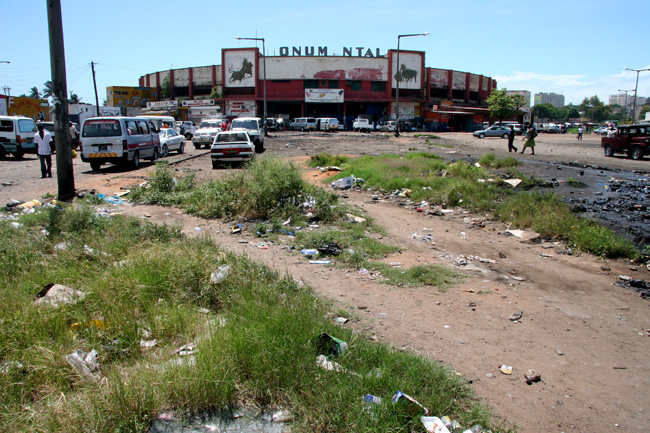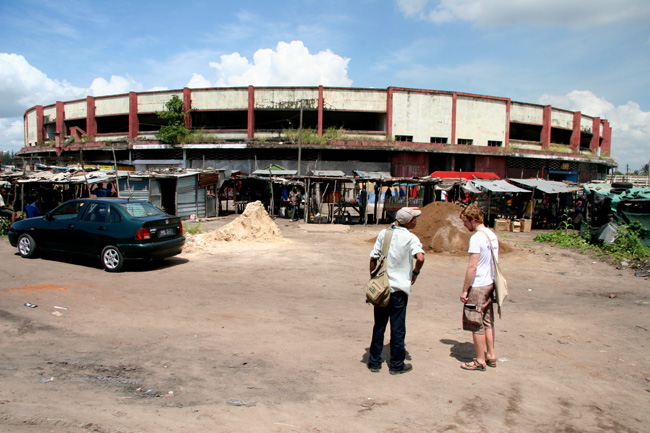BULLFIGHTING ARENA IN MAPUTO
 The entrance side of the stadium
The entrance side of the stadium
In our minds Bullfighting has always been predominantly a Spanish sport. But it is also Portugese and of course then South-American. Since Mozambique was a Portugese colony from since colonies were invented (and this is obvious everywhere today in Modern Mozambican society) they also brought with them Portugese Bullfighting. There is one discarded Bullfighting ring here in Maputo and I am told there is an other in Pemba in the North. Because of my curiousity I went to look at the stadium here, it is close to supermarkets and local market. It is in a terribly dilappidated state as can be seen from the photos, and the one who has responsibility to look after it has rented our spaces in it. Almost all of them are garages and car parts sales. There is a sublime beauty in the activity of men fixing cars and a grand concrete stadium.
 All around are the traditional market stalls, where one can buy the household groceries, vedgetables, salt and rice and sugar.
All around are the traditional market stalls, where one can buy the household groceries, vedgetables, salt and rice and sugar.
Portugese style bullfighting is somewhat different to the best known Spanish. There is a horseman (rider) dressed in traditional 18th century costumes and he fights the bull from horseback. The horses are specially trained for the fights and often have skills in dressage and many exhibit that in the arena. The purpose of this fight is to stab three or four bandarilhas in the back of the bull. Then forcadors are a group of eight men who challenge the bull directly, without any protection or weapon of defense. The front man provokes the bull into a charge to perform a pega de cara or pega de caras (face catch). The front man secures the animal’s head and is quickly aided by his fellows who surround and secure the animal until he is subdued. Forcados were usually people from lower classes who, to this day, practice their art through amateur associations.
 February 27, 2010
February 27, 2010
 Tags: architecture, bullfighting, maputo, market, mozambique Posted in: PONDERINGS
Tags: architecture, bullfighting, maputo, market, mozambique Posted in: PONDERINGS


